MIP- and FMI walls
Table of contents
1. MIP- and FMI walls
The FMI method (cut, mix, inject) or the well known MIP method (Mixed-in-Place, patented by Bauer Spezialtiefbau GmbH) can be used primarily to construct cut-off walls in non-cohesive soils to enclose contaminated sites or to seal dikes and dams. They are also used as load bearing retaining walls of excavation pits. FMI / MIP walls can also be used to secure terrain jumps.
MIP walls can be produced with single augers or triple augers, as shown in the following photos.
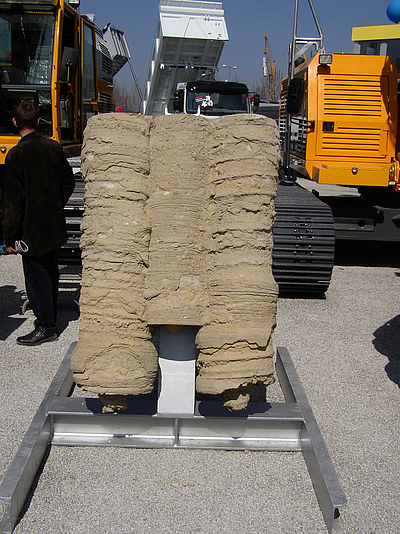
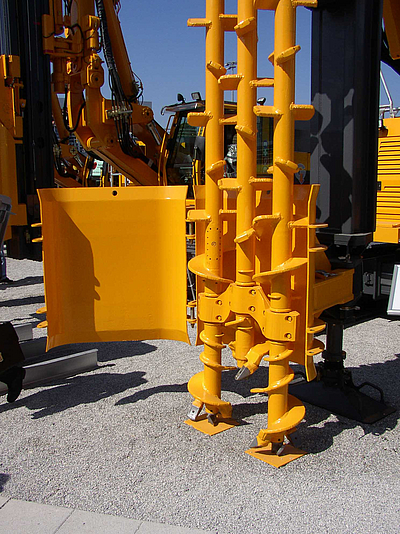
The Bauer Spezialtiefbau GmbH developed the Cutter Soil Mixing process (CSM) as an alternative. In contrast to the MIP process, the mixing tools rotate around horizontal axes. The soil is milled by the cutter wheels and processed into an earth concrete with the addition of binding agents and water.
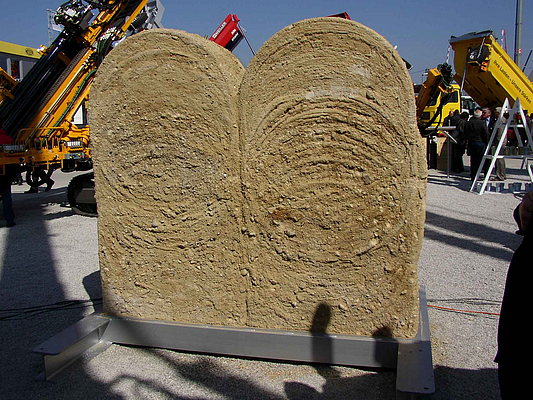
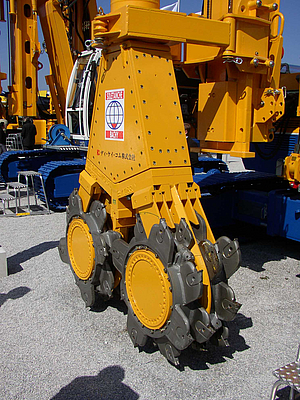
2. Construction of MIP walls
The triple augers are used to mill open and mix the existing soil in-situ with the binding agent, filling the pore spaces in this process. After hardening of the binding agent, the individual cuts form a jointless earth concrete body, the MIP or FMI wall. The cuts are constructed by the “pilgrim step” method or by the “double pilgrim step” method as shown below.
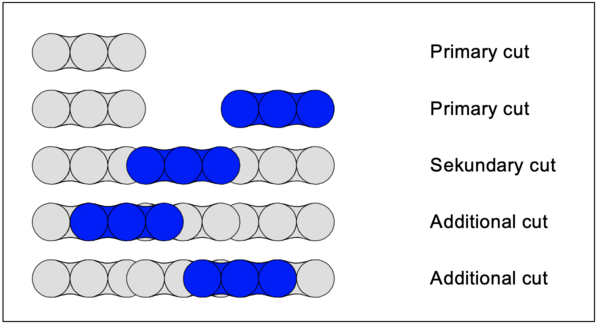
If due to certain loading conditions static reinforcement is required, steel girders can be inserted as reinforcement elements in the not yet hardened earth concrete. Both waling and struts can be applied as a support of MIP- and FMI walls.
A compressive strength of up to approx. 10 N/mm² can be achieved for retaining walls or for cut-off walls with a static function or to secure terrain jumps. For cut-off walls without reinforcement, MIP- or FMI walls with a lower compressive strength are used.
Do you want to get started directly with the design of MIP- and FMI walls? Just one "mouse click" will take you to the license variants of the software solution: GGU-RETAIN.
3. Sustainability
MIP and FMI walls are built in the existing soil. No soil is excavated, and environmental pollution due to soil transport or the possible need to dump contaminated excavated material is avoided as far as possible. Environmentally friendly binding agents can be used to mix the natural "aggregate" - the existing soil - into the final wall material.
4. Static systems
Static systems are used to calculate internal forces and state variables, which depend on the selected embedment depth and anchors or struts in one or more planes:
- unsupported wall, fully fixed earth support
- single / multiple supported wall with free earth support
- single / multiple supported wall, fully fixed earth support
- single / multiple supported wall, partially fixed earth support
The calculation of MIP- and FMI walls can be carried out according to several procedures. The classical methods refer to the earth pressure theory and thus vary depending on the static system with regard to the magnitude and distribution of the earth pressure and the reaction forces in the soil. Basic systems are single or multiple supported beams that are freely supported or have a fixed earth support. A partially fixed earth support is also possible. More detailed information on the calculation methods, the approach to earth pressure, etc. is given in the EAB (Empfehlungen des Arbeitskreises “Baugruben”), among others. Computer aided methods also allow for the consideration of a bedding of the beam.
For a fully fixed earth support a rotation of the wall around a low-lying pivot point is necessary. The position of the pivot point is slightly above the base of the wall. Underneath, deformations occur that are directed towards the earth side and mobilize a reverse passive earth pressure there. For a simplified calculation, the BLUM equivalent force C is applied to the theoretical pivot point, which replaces the passive earth pressure below the pivot point and additionally corrects the simplified assumed passive earth pressure on the excavation side. Together with the resultant of the passive earth pressure this equivalent force C forms a pair of forces that represents the fixing of the footing of the MIP- and FMI wall.
5. Necessary computational verifications
For a MIP- or FMI wall the following individual verifications are necessary for the limit states mentioned, which can be carried out with the computer program GGU-RETAIN:
- Internal failure or excessive deformation of the structure or structural elements, including the MIP- or FMI wall itself, anchorage, struts, wailing etc., in which the strength of the structural materials is significant in providing resistance (STR).
- Failure or excessive deformation of the ground, in which the strength of soil or rock is significant in providing resistance (GEO-2), as for example:
- Analysis of the earth support, rotational failure of embedded walls (embedment depth)
- Analysis of the mobilized passive earth pressure
- Analysis of the vertical capacity
- Analysis of the deep seated stability
- Analysis of the heave of anchor soil (deadman anchors)
- Analysis of the pull-out-resistance of anchors
- Hydraulic Heave, caused by hydraulic gradients (HYD)
- Wall deformations and displacements (SLS)
- The safety of the overall stability must be investigated in all cases (GEO-3). The wall rotates about a pivot point and the whole system, including the wall, the anchorage and the soil fails as a rigid body. The necessary verification can be carried out e.g. with the computer program GGU-STABILITY.
6. Example of the use of the computer program GGU-RETAIN (incl. video)
The following video shows how the necessary verifications for the design situation DS-T for a MIP- or FMI wall with a fully fixed earth support and with a single anchor can be performed using the computer program GGU-RETAIN:
Notes on use
All texts, images and media listed here are subject to copyright and are the intellectual property of Civilserve GmbH. Use is only permitted with appropriate reference and a link to this source.